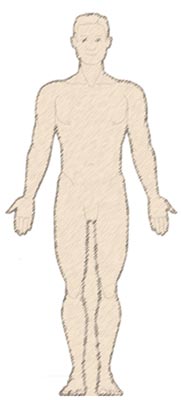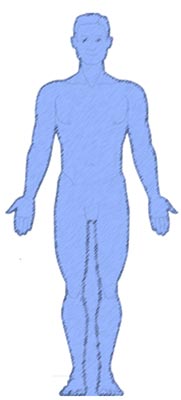

John G Thomas Ph D Professor Emeritus

National and International studies in 2007/8 unmasked the hidden microbial world of Homo sapiens and the partnering of pro-caryotes and eucaryotes, coining the new Term "Super Organism" . Additional studies highlighted the importance of this balance in disease and health , better characterized by a phyla -signature than individual species . An "Anti-Koch " theme emerged that recognized 6 Phyla versus 10,000 species in H. sapiens ,representing 8,000,000 genes, more than 230 times that of human cells and genetic strength.
Recognizing the occurance of human disease over time , we constructed a "Microbial Clock", keyed to age and diseases , focusing on organisms associated with these selected diseases highlighting an ageing population , often tumor associated . Our ultimate goal was to characterize the shift in organism population dynamics to the aging process and the potential use of "reconstructive microbiology "(Probiotics) as an eco-friendly intervention .
10 targeted Chronic Disease were selected by economic impact, potential management and age of occurance . The "Microbial Clock" was arbitrarily divided into 4 quadrants associated with 4 age groups( 0- 12 yr with a subset of new born; 12- 18 yr ,Adolescent ; 19 -55yr , Adult ; 56 yr and older , Aged, recognized by color and potential consequences ( Green, Yellow, Orange , and Red ). Microbiologic data was organized by age for : 1) human disease , 2), microbial populations by disease , 3) microbial pathogenic products , linking potential intervention by "restorative microbiology" (Probiotics) .
Targeted Diseases could be grouped by age , studying population dynamics, emphasizing the percentage of population at -risk ; diseases highlighted Autism and Athesmha, Diabetes and Obesity selected tumors /cancers and Dementia . Shifts in microbial populations could be correspondingly over-layed to these age groups, creating a 4 quad "Microbial Clock ", emphasizing a potential partnering of 26 microbes representing all phyla 6 , age and disease in 4 distinct color zones . An example was P gingivalis, which over the 4 time zones changed from normal flora (Green) to distinct dental pathogen (Orange) to tumor stimulator in colo-rectal cancer (Red), high lighting it possible role in tumorgenisis in the Aged.
Age, disease and microbes can match , forming a 4 color coded "Microbial Clock" , constructing the importance of a balanced microbiota ( phyla characterized) through age in health and unbalanced in disease . Selected microbial populations were unbalanced in selected diseases and could pose a unique target and marker in disease progression ( Bio-Marker ). The Orange and Red zone unmasked the potential mutagenisis and tumor marker for selected microbes , highlighting a microbial pathogenicity/trigger and use of eco-friendly "reconstructive microbiology" (Probiotics) in management, matched to age.
Microbes Matter
Human
A / B / O - Blood Group

Siddhartha Mukherjee - The Emperor of all Maladies: A Biography of Cancer Pulitzer Prize
Microbiota
Phyla / Family Enterotype I, II, III


My Microbial Clock was a way of “incorporating/visualizing and expressing the M. Blaser Concept of ‘one common pathway’ linking metabolic diseases, which I expanded to include age related and aging as a disease.
OR A MEANS OF EXPRESSING A COMMON PATHWAY LINKING 1) DISPARATE METABOLIC, AND 2) AGE RELATED DISEASES INCLUDING AGING, RATHER THAN MULTIPLE PATHWAYS
HUMAN CLOCKS: Biologic and Microbial. The 2017 Nobel Prize for Medicine was awarded to 3 investigators who unraveled the Human Biologic Clock and its importance to circadian rhythms in life magnified by environmental pressures. This fit perfectly with another human clock, the recently clarified Microbial Clock, and microbial imbalance in at least 8 human diseases, birth to death, originally trumped by the best seller, ”Missing Microbes”, often associated with the misuse of antibiotics early in life: Autism/ Asthma, Diabetes/Obesity, Colo-rectal-cancer/C. difficle colitis, Oral health, Dementia and potentially, Aging. These facts highlighted that microbial genetic strength outmanned human genetic strength by 360 times and recognized that microbes have “dual citizenship.” (www.globalbugs.com/Hologenomic center). Puppets: Marko:Polo.
"Antibiotics have been recently associated with chronic diseases highlighting aging and a microbial clock: Newborn and Childhood diseases, asthma and autism, particularly, are untoward consequences. In adolescence, mounting studies of diabetes and obesity, highlight antibiotics as suggested co ‐ factors, amplifiers or precipitators and should be used only when value of therapy has been validated. For the Aged, antibiotics are potential co ‐ factors in colorectal cancer stomach cancers (H pylori).."